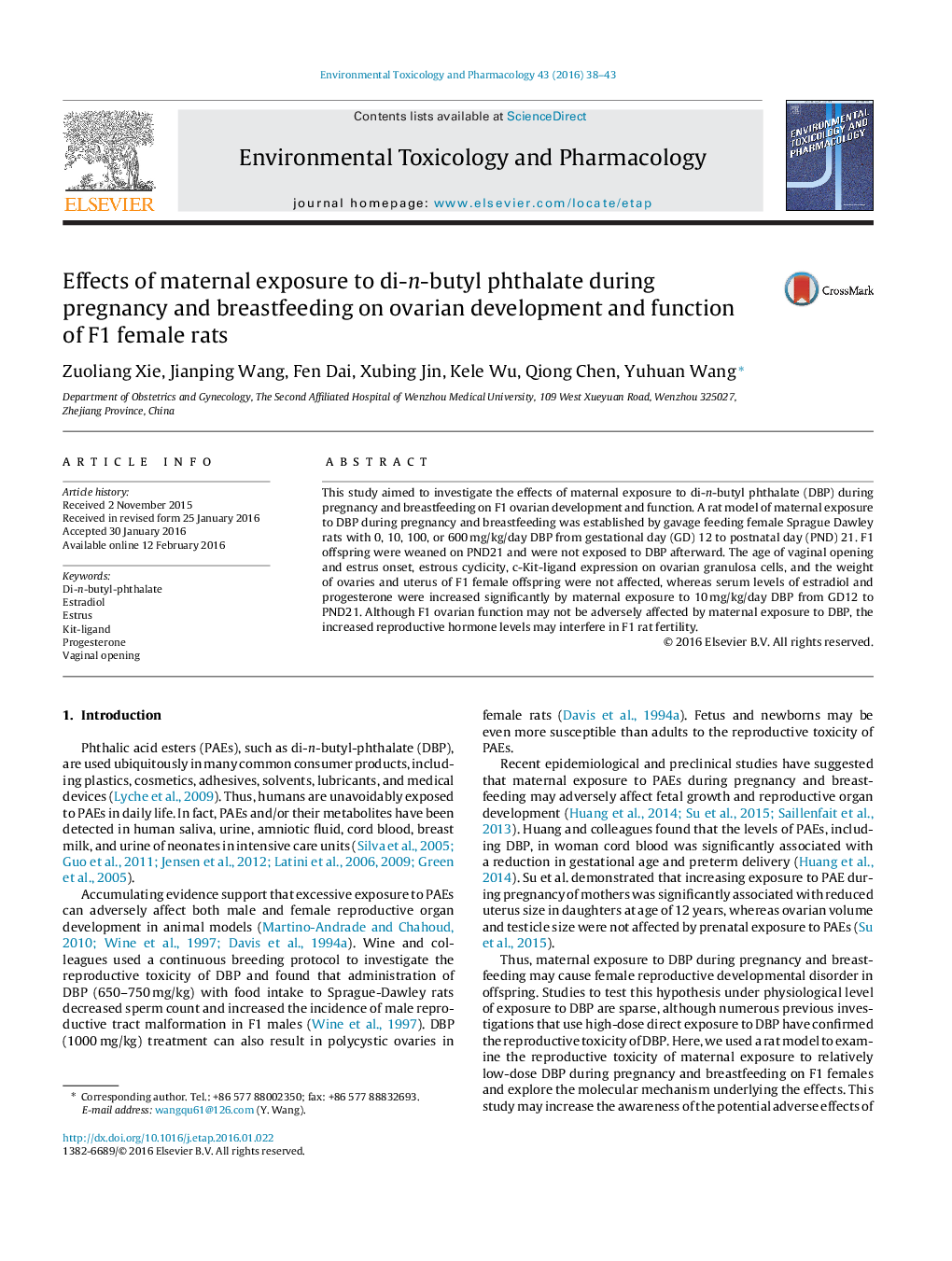| Article ID | Journal | Published Year | Pages | File Type |
|---|---|---|---|---|
| 2582750 | Environmental Toxicology and Pharmacology | 2016 | 6 Pages |
•Mother rats were exposed to DBP during pregnancy and breastfeeding.•The maternal exposure does not affect F1 ovarian development and function.•The maternal exposure increases serum reproductive hormone levels of F1 females.
This study aimed to investigate the effects of maternal exposure to di-n-butyl phthalate (DBP) during pregnancy and breastfeeding on F1 ovarian development and function. A rat model of maternal exposure to DBP during pregnancy and breastfeeding was established by gavage feeding female Sprague Dawley rats with 0, 10, 100, or 600 mg/kg/day DBP from gestational day (GD) 12 to postnatal day (PND) 21. F1 offspring were weaned on PND21 and were not exposed to DBP afterward. The age of vaginal opening and estrus onset, estrous cyclicity, c-Kit-ligand expression on ovarian granulosa cells, and the weight of ovaries and uterus of F1 female offspring were not affected, whereas serum levels of estradiol and progesterone were increased significantly by maternal exposure to 10 mg/kg/day DBP from GD12 to PND21. Although F1 ovarian function may not be adversely affected by maternal exposure to DBP, the increased reproductive hormone levels may interfere in F1 rat fertility.
